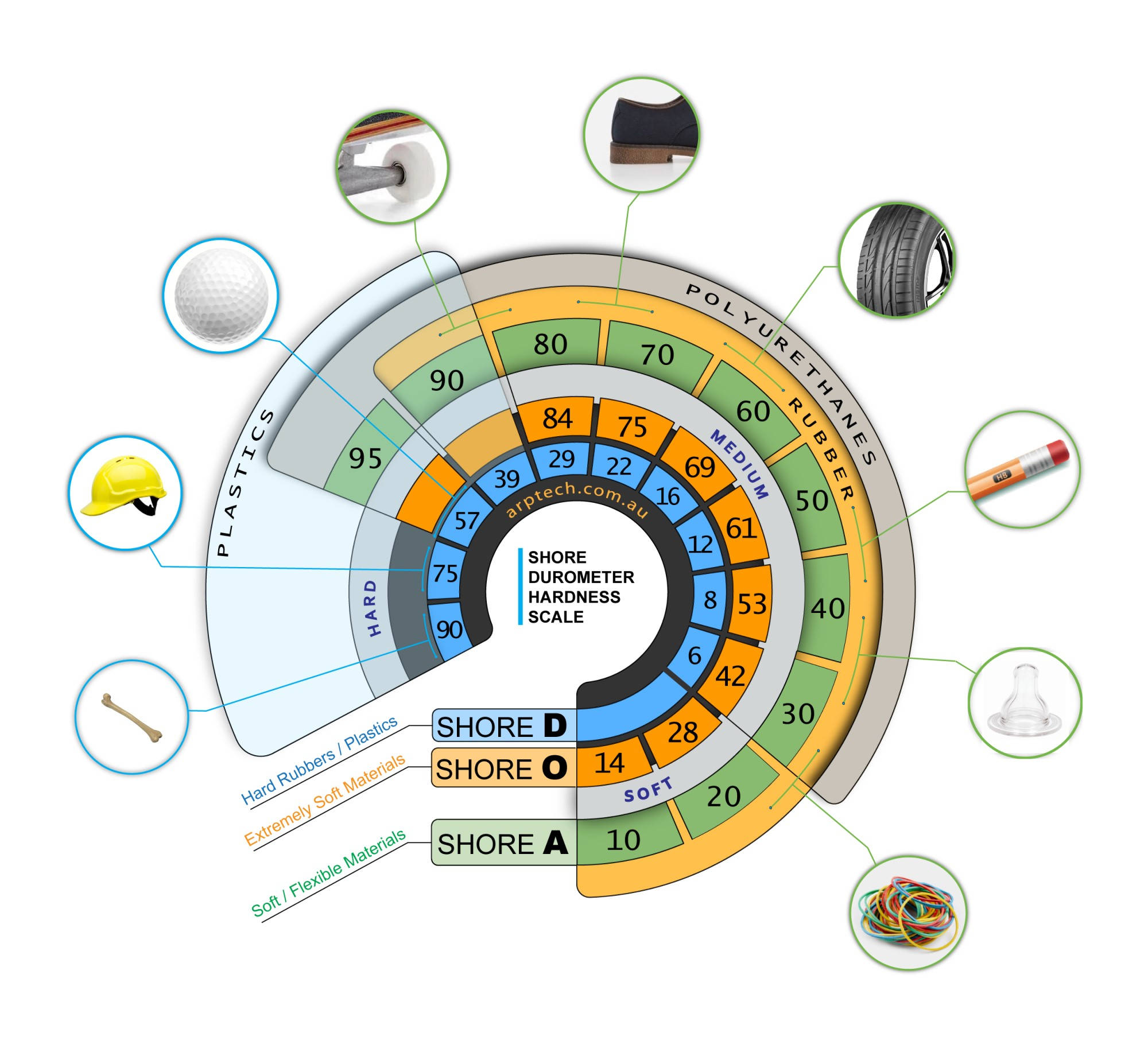What is Durometer Shore Hardness?
The Durometer or Shore durometer is typically used as a standard for measuring the hardness of non-metallic materials such as Polymer, Rubber, Elastomer. The Shore hardness is measured with a device known as a Durometer and the determined hardness values are therefore referred to as Durometer hardness.
As per ASTM D2240 standard, there are about 12 different durometer scales, used for measuring hardness of materials with different properties. However, Shore A and Shore D scales are most commonly used in engineering components such as polyurethane, rubber or plastic parts. The Shore A scale is employed for softer materials and D scale is employed for harder materials.
It is important to note that the scales overlap, but are independent of each other. There is no straightforward relationship between a material's durometer in one scale, and its durometer on any other scale, or by any other hardness test. Despite these limitations, it can be useful to show a rough indication of how the different hardness scales are correlated.
Each scale has a resultant value between 0 and 100, with higher values indicating a harder material. As a thumb rule, higher numbers on the scale indicate a greater resistance to indentation, means harder material. Lower numbers indicate less resistance, thus softer material. In other words, a higher durometer rubber is harder than a lower durometer rubber.
The Durometer hardness scale was defined by Albert Ferdinand Shore, who developed a device to measure hardness in the 1920s. The Durometer term is often used to refer to the measurement as well as the instrument.
The Hardness test is based on the measurement of the penetration of a rigid ball into the specimen under specified conditions. The measured penetration is converted into International Rubber Hardness Degrees (IRHD). The hardness scale of degrees is chosen such that 0 represents a material having an elastic modulus of zero, and 100 represents a material of infinite elastic modulus.
Durometer is a dimensionless quantity, it represents a relative comparison of hardness between different, yet similar grade of materials, having hardness measured on the same durometer scale. The whole idea to develop a Shore hardness scale, was to have a point of reference to compare the hardness between various kinds of non-metallic materials, such as soft rubbers, elastomers, plastics, foam, gels etc.
Why does Durometer Shore Hardness Selection is Important?
As a general rule, harder materials tend to wear or scratch on softer materials. Hardness covers several properties, as an example resistance to deformation, resistance to friction and abrasion. The Shore Durometer hardness value itself does not provide direct information of other properties like strength or resistance to scratches, abrasion, or wear, however material hardness plays a pivotal role in the material selection. Hardness is a measure of a material’s resistance to localise the plastic deformation, it can be defined as a measure of a material’s resistance towards an external force applied to the material.
Product designers, consistently use this information in conjunction with other material properties to make the best material choice. For product designers, it's an important consideration to determine the hardness of plastic or TPE’s they are intending to use. Therefore, great importance is given to the material hardness selection on the consumer products, medical, healthcare or industrial products. This may become evident when considering cosmetic effects such as scratching or surface gloss deterioration from the rubbing of mating materials together. Harder polyurethane or plastics materials can be substituted for metal parts or high impact resistant applications due to greater resistance to flex.
Here at ArpTech, we offer a wide variety of materials ranging from soft and stretchable Polyurethane Rubber, TPE, Silicone Rubber, flexible to hard Plastic. We use state-of-the-art manufacturing techniques to vacuum cast polyurethane rubber parts or injection mould various grades of Thermoplastic Elastomer (TPE) or Thermoplastic Polyurethane (TPU) materials.
Hardness of Typical Engineering Grade Elastomers and Plastics:
| Material | Average Hardness |
|---|---|
LDPE
|
55D |
PTFE
|
55D |
HDPE
|
70D |
POLYPROPYLENE
|
75D |
ABS
|
Rockwell R102 |
POLYCARBONATE
|
Rockwell R118 |
PVC Rigid
|
90D |
NYLON
|
80D |
ACETAL
|
83D |
Polyurethane
|
30A-95A |
Rubber
|
20A-85A |
Thermoplastic Elastomer (TPE)
|
10A – 95A |


